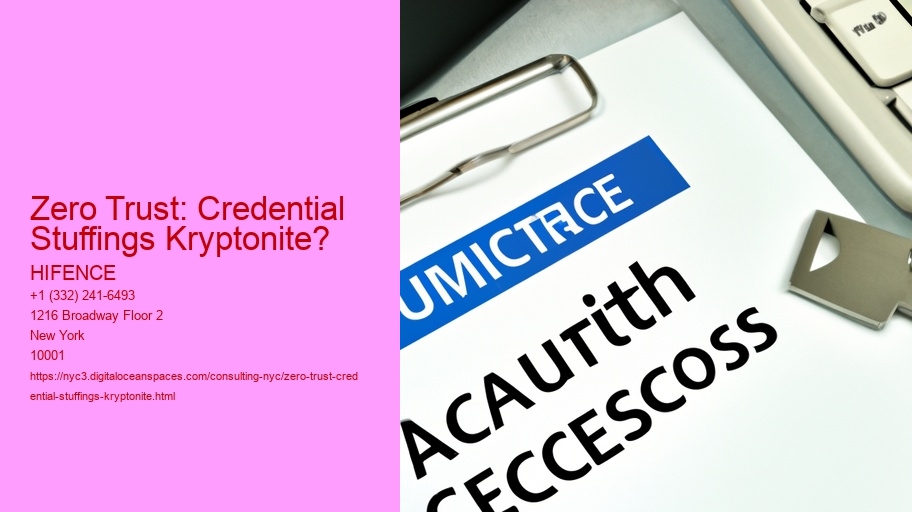
Zero Trust: Credential Stuffings Kryptonite?
Okay, lets talk about Zero Trust.

Credential stuffing, for those unfamiliar, is a nasty tactic where bad actors use lists of usernames and passwords (often gleaned from previous data breaches) to try and log into accounts across multiple websites. Theyre betting that people reuse passwords (and, sadly, many do), hoping to stumble upon a working combination.
Zero Trust, on the other hand, is a different beast entirely. Its a security framework, not a particular product, that operates on the principle of "never trust, always verify." Think of it as a very suspicious gatekeeper. Instead of assuming anyone inside your network is safe, Zero Trust treats every user, device, and application as a potential threat. This means continuous authentication and authorization are required, regardless of location or network access.

So, how does Zero Trust combat credential stuffing? The key lies in its multi-faceted approach. First, Zero Trust strengthens authentication. Its not enough to just enter a username and password. Multi-factor authentication (MFA), biometrics, and behavioral analysis are all part of the game. Even if a credential stuffing attack manages to compromise a username/password pair, it isnt enough to gain access. The attacker would also need to bypass the other authentication layers.

Second, Zero Trust implements micro-segmentation. This divides the network into smaller, isolated zones. Even if an attacker gets into one zone, they cant automatically access everything else. They need to be explicitly authorized for each segment. This limits the blast radius of a successful attack.
Third, Zero Trust emphasizes continuous monitoring and threat detection. Its constantly analyzing user behavior and network traffic for anomalies.
Now, lets not get carried away. Zero Trust is not a silver bullet. Its not a magical solution that completely eliminates the risk of credential stuffing. It requires careful planning, implementation, and ongoing maintenance. It also relies on users adopting and understanding the new security protocols. Moreover, it might not be feasible or cost-effective for all organizations.
Furthermore, crafty attackers are constantly evolving their tactics. They might try to bypass MFA through social engineering or exploit vulnerabilities in Zero Trust infrastructure itself. Theres truly no such thing as perfect security.
In conclusion, while Zero Trust isnt a guaranteed cure for credential stuffing, it is a powerful weapon. By strengthening authentication, limiting the attack surface, and improving threat detection, it makes it much, much harder for attackers to succeed. It raises the bar significantly. managed services new york city Its more like kryptonite-infused armor for your network. And in the ongoing battle against cyber threats, thats a very good thing indeed!